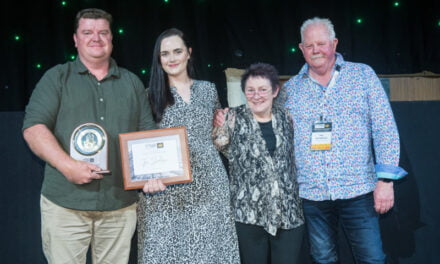A national focus is being called for by major players.
Shane Vicary is understandably worried. The CEO of AKD has had to lay off 51 people since the Covid-19 pandemic started. “What’s the future outlook if we see a massive scale back in activity?” he asks. “Will I have to make more people redundant? That’s quite scary. I don’t think Australia is prepared for an economic recession because we’ve been so lucky, but it’s starting to bite, it’s starting to hurt.”
Like many Timber Industry Associations (see page 5 and page 36), Vicary has been working closely with other major players in construction-related industries calling for government stimulus to support and encourage housing through the crisis. But he also wants to encourage those within the industry to play a more active role.
“At the moment, there’s a real push for Australian companies to look at their domestic supply chains and recognise the security and reliability you get from having supply from Australia,” Vicary says.
He points out that construction is uniquely positioned to make a substantive difference: “There are 1.2 million people involved in construction of houses at the moment. We’ve got a population base that’s continued to grow at an average of 1.5% pa, creating a constant demand for new housing, and it keeps the wheels of commerce turning. Now, with immigration effectively stopped and overseas students gone home, there is a deficit in demand. There is a need now for government intervention with a stimulus support package, to give both borrowers and lenders confidence to invest in new house construction. We also need to see our borders opened in a controlled and safe manner for permanent migrants with appropriate quarantine systems.”
Timber Queensland has been making a very similar case to their state government. Clarissa Brandt, strategic relations and communications manager at TQ recently ran a campaign where fabricators backed up the organisation’s business case for stimulus with personal stories and photographs. Both were submitted as part of an industry letter signed by the major Queensland timber businesses and also run in a broader social media campaign: #MakingItForQld.
 “We had people come in across the whole of the industry supply chain – about 64 companies supported it with images,” says Brandt, who believes the sense of community created with the project is as important as the strength of the message to the Palaszczuk government.
“We had people come in across the whole of the industry supply chain – about 64 companies supported it with images,” says Brandt, who believes the sense of community created with the project is as important as the strength of the message to the Palaszczuk government.
“Everyone’s very worried about the future, so anything that’s going to help build demand in construction at the moment is important. It’s really good for morale to get involved in something. Participants been able to push the photos out on their own social media channels, and Timber Queensland is doing the same through our Buy Queensland Timber accounts,” Brandt adds.
She says they’ve had a good response from the Queensland Government on other issues during the crisis, which leads her to be optimistic. “We’ve been working very closely with the state through this period on their workplace health and safety working group and their seasonal workers working group. They’ve been responsive on a number of industry issues, so we’re very hopeful something will come sooner rather than later,” Brandt says.
“Tasmania has already introduced stimulus measures for construction, so we think it’s just a matter of time. Meanwhile, we’re pushing the Buy Queensland Timber message across the industry.”
This focus on domestic supply during the current crisis comes with multiple advantages for builders and fabricators. Many come as a result of the plummeting Aussie dollar. This means there is good local supply available at affordable prices and in AUD. Additionally, with soaring international freight costs and less regular shipping and air freight, the actual physical supply of imports has become less certain. Completion of builds, and the jobs attached to them, relies on security of supply chains.
“In our industry, there’s a ratio of 1:4 direct to indirect jobs. If we start shutting down and shedding staff, a lot more jobs will follow, so we need to limit the damage,” Vicary says.
“If you compare us to the US and the UK, Australia didn’t have a GFC like they did,” he points out. “We haven’t had an economic recession since 1991, when GDP was -1.7%. Now we’re talking about having GDP of -10%. It took a long time to recover after ’91, and my concern is how our nation is going to cope with much higher levels of unemployment than what any of us has ever experienced in our working career.”
That said, there are positives. “I do think we’re going to come out living and operating in a completely different world, where we actually have people living in regional locations again, using remote work practices,” Vicary says. “I mean, here I am, I’m CEO of a 1200-person organisation with 13 sites across the nation. I live regionally and thanks to efficient video conferencing tools such as Zoom and MS Teams, I’ve never been so connected to all my sites.”












